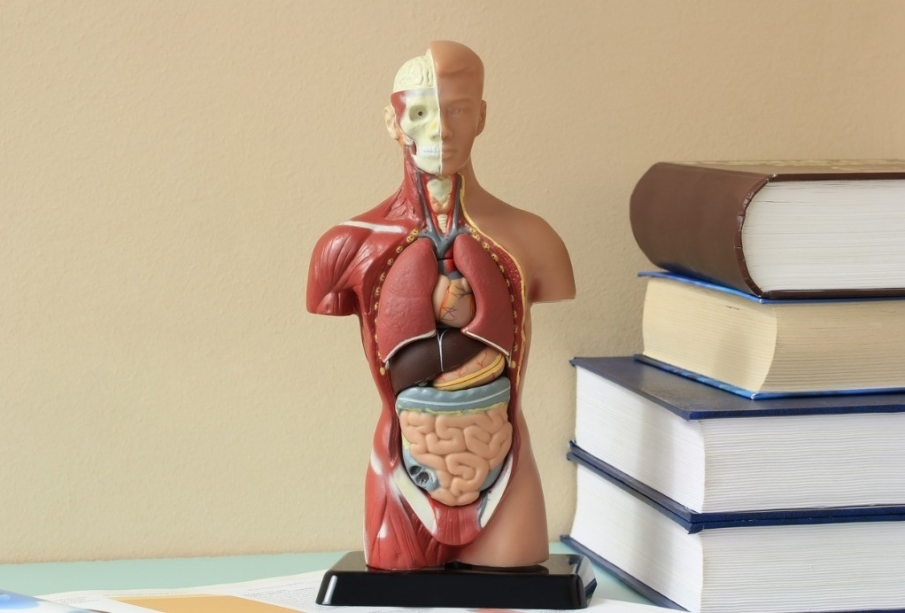8 Study Tips To Help You Learn Human Anatomy

Anatomy is the study related to different organs in the body and physiology is related to the various functions performed by organs for sustaining life. For instance, human anatomy deals with where various organs like the brain, heart, liver, and kidneys are located in the body. And physiology deals with the functional aspect of these organs. So we know through physiology that the kidney helps in pumping out the toxic substances from the body and the brain sends signals to every part of the body and helps in reasoning and thinking.
Human anatomy and physiology form the foundation pillars for all clinical studies. Anyone desirous of becoming a physician or a nurse should know everything related to human anatomy.
The clarity in the basics of this subject is important as it is related to other clinical learning going forward. Without understanding human anatomy and physiology, it is not possible to comprehend or learn other advanced subjects related to the healthcare sector. If you are an aspiring student of medical or nursing programs who wants to ace your anatomy exams then consider using online resources.
Why are anatomy and physiology important?
Anatomy and physiology are like pillars of medical science. When we understand the location of every organ and the different functions performed by each organ, it clears our understanding when formulating advanced medicines or treating patients with ailments. Through anatomy and physiology classes, clinicians can prepare themselves for their future medical practice. Nurses can apply the concepts of anatomy and physiology in their patient care and initial assessment of a clinical case. Surgeons who perform both complex and minimally invasive procedures must be well-versed with different body parts so that they don’t cut open the wrong tissue.
Learning anatomy and physiology
Human anatomy and physiology is a lengthy subject that can be memorized effectively by grasping the concepts and using some proven techniques to recall the important points. Here are a few tips that students have used in the past to master anatomy and physiology learnings:
- Set a timetable
When you allocate a specific time to study, things will set into a routine. Subconsciously a student who starts studying at the same time daily will be able to complete revising an exhaustive syllabus through consistent efforts. Anatomy is a lengthy subject and without constant revision, it will be difficult to remember it in the future. Through an organized study routine, there will be ample time to complete the subject revision without rushing through any of the topics.
- Regular studies with short intervals
When you train your mind to read regularly with a focussed mind and take a short interval, the concepts are absorbed and retained in the mind for a long time. Some life sciences and clinical course students swear that they still remember a few concepts just because of this simple hack. The regular focused mindful study creates a pattern that will help assimilate more information in less time. Short intervals will offer relaxation and just enough distraction required to avoid stressing the brain with too much information. This is a sure-shot study technique that can be adopted for learning any subject.
- Memory hacks
Use all the possible memory hacks like mnemonics, flashcards with a topic and its definition at the back of the card, short quizzes, and practice tests to aid in memorizing and recalling all the topics. Even students with weak memory use mind-mapping techniques to study science topics with related diagrams. Without grasping the concepts it will not be easy to retain the matter for a very long time. So it is equally important to understand the lesson before memorizing the same.
- Study resources
Use all the study resources like textbooks, reference material from the library, online free classes, audio clips, and subject-related videos effectively. The best resource will always be the course instructor. So attend your classes regularly.
- Be part of a study group
A study group of like-minded students who are learning the same lessons can act as pillars of support in pushing and motivating one another to get through lengthy lessons. Members of study groups will be able to test one another, divide the syllabus among the group to prepare notes, and help each other by sharing methods that are working for them.
- MedTech platforms
AI and deep learning methods have enabled medical and nursing education preparatory course platforms to offer immersive videos with simulated graphics of human anatomy. As a result, in a safe environment without exposure to pathological contamination, a student can learn about different parts of the body and test themselves through their practice quizzes.
- Time management
Time is scarce in preparation for clinical and nursing programs and a student will always be racing against the clock to complete assignments and clinical rotations. So it is essential to understand how much time has to be allocated subject and topic-wise during study time. This simple logic will help you set enough time as per the weightage of the topic in the final exams.
- Short breaks
It is necessary to take short breaks regularly to unwind and rejuvenate before starting another lap of a study routine. Short getaways with family and friends will help students destress and again come back in form to prepare again for their lengthy routine.
Conclusion:
Human anatomy and physiology, though important and exhaustive in lesson format, can be mastered by anyone aspiring to become a doctor or a nurse by following the above study tips. Added to the above tips, one can tweak their schedule at their convenience. However, time management and consistency are essential above everything else.
The way one wants to memorize or map their brain with the relevant diagrams to remember a concept is dependent on individual capabilities. It can be accentuated with practice. But the critical element will always be a constant revision that will help one recall the concepts when required. Human anatomy is learned through theory and practice. If a student has access to university-provided cadavers, they should make use of those sessions for a good learning experience.










